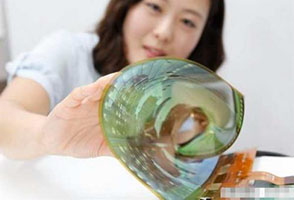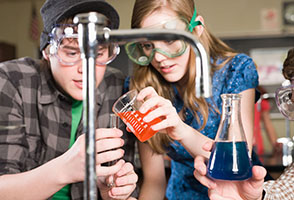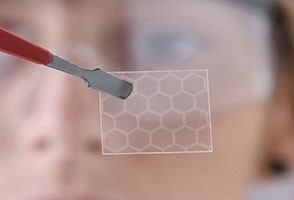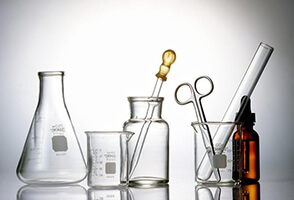Properties and simple active composition of noble metal catalysts
2022-02-09
At present, the research focus of active components of catalysts is the modification of platinum, palladium, gold and other single-component precious metals and the design and synthesis of two-component precious metals. The research of carrier mainly involves acidity, pore structure and strong interaction between carrier and metal. In the future, it is necessary to improve the toxicity resistance of noble metal catalyst.
Active element component of noble metal catalyst
Noble metal catalysts usually take metals such as Pt, Pd and Au as active components, among which the research on Pt and Pd started earlier, and the research on Au has also received more attention in recent years. The analysis of noble metal catalyst elements is as follows.
1. Pt(Platinum) catalyst
In general, Pt catalyst has higher catalytic combustion activity for benzene and toluene, and higher CO2 selectivity in the treatment of chlorine-containing VOCs, but it is difficult to catalyzed the oxidation of ethyl acetate, and susceptible to CO poisoning. For Pt catalyst, with the decrease of Pt particle size, the dispersion of Pt increases, while the ratio of Pt(0) decreases. Therefore, it is an effective way to improve the catalytic performance to accurately control the size of component particles by using appropriate methods. Transition metal modified Pt catalyst is another research direction. The role of transition metal is generally reflected in two aspects:
1) Improved the dispersion of Pt;
2) Synergistic effect of Pt on activity and toxicity resistance was improved.
2. Pd catalyst
Compared with Pt catalyst, Pd catalyst has better hydrothermal stability. Under certain conditions, Pd catalyst has higher catalytic activity than Pt and Au catalyst. The performance of Pd catalyst was significantly affected by the loading method.
3. Au catalyst
Au is a metal inert to oxygen and hydrogen, but Haruta et al. found that the catalytic activity can be significantly enhanced if the particle size of metallic Au is controlled below 5 nm and loaded on the metal oxide carrier. Compared with Pd and Pt, the interaction force between Au and adsorbent is more moderate, and the effect of Au is far better than that of Pt and Pd catalysts under some conditions. The research focus of Au catalyst is the choice of carrier and the synergistic effect between Au and carrier.
4. Two-component precious metal catalyst
Many studies have shown that adding another noble metal component to the single component noble metal catalyst can promote electron flow and surface oxygen generation, affect particle size and electronic structure, and show better catalytic activity than the single component noble metal catalyst. The addition of rare earth elements can affect the charge transfer on the surface of noble metal atoms and further improve the REDOX ability. Among them, CeO2 can quickly achieve the transformation of Ce3+/Ce4+ in the REDOX process and is often used as a catalytic agent.
The properties of support and the influence of support - metal interaction on catalyst activity
The carrier can not only carry the active component mechanically, but also increase the active surface area of the catalyst and improve the dispersity of the active component. Traditional catalyst supports include γ -al2o3, TiO2, SiO2 and molecular sieve, etc. In recent years, porous metal oxides such as Co3O4 and Mn2O3 have been reported as catalyst carriers. The properties of the support (porous structure, acidity, etc.) and the strong carrier-metal interaction are closely related to the activity and stability of the catalyst.
1. Porous structure of the carrier
Metal oxide carriers with porous structure are the focus of current research. In addition to high specific surface area, they also have certain catalytic capacity. The specific pore structure of the material is conducive to the adsorption of oxygen and promotes the increase of oxygen concentration on the surface.
2. Acid potential of the carrier
Acidic sites can adsorb reactants and dissociate them into smaller molecular products. Acidic sites of carriers have a significant impact on the reaction process. It has been reported that the number of Bronsted acidic sites is positively correlated with catalytic oxidation activity.
3. Strong carrier-metal interaction
The strong carrier-metal interaction (SMSI) indicates that the reducible carrier transfers some of its electrons to the metal, changing the physical and chemical properties of the metal components, thus affecting the catalytic reaction.
Conclusion
At present, transition metal modified noble metal catalysts and pt-Pd, PD-Au and other two-component noble metal catalysts are the research focus in this direction. The study of noble metal catalyst support usually involves the regulation of pore structure and acidity of the support, which affects the dispersion and distribution form of components. The acidity of the support strengthens the adsorption cracking of molecules, but also easily leads to the formation of carbon deposition. In addition, some catalytic materials also produce strong carrier-metal interaction, and the physical and chemical properties of the components change, which affects the reactivity of the catalyst.
Active element component of noble metal catalyst
Noble metal catalysts usually take metals such as Pt, Pd and Au as active components, among which the research on Pt and Pd started earlier, and the research on Au has also received more attention in recent years. The analysis of noble metal catalyst elements is as follows.
1. Pt(Platinum) catalyst
In general, Pt catalyst has higher catalytic combustion activity for benzene and toluene, and higher CO2 selectivity in the treatment of chlorine-containing VOCs, but it is difficult to catalyzed the oxidation of ethyl acetate, and susceptible to CO poisoning. For Pt catalyst, with the decrease of Pt particle size, the dispersion of Pt increases, while the ratio of Pt(0) decreases. Therefore, it is an effective way to improve the catalytic performance to accurately control the size of component particles by using appropriate methods. Transition metal modified Pt catalyst is another research direction. The role of transition metal is generally reflected in two aspects:
1) Improved the dispersion of Pt;
2) Synergistic effect of Pt on activity and toxicity resistance was improved.
2. Pd catalyst
Compared with Pt catalyst, Pd catalyst has better hydrothermal stability. Under certain conditions, Pd catalyst has higher catalytic activity than Pt and Au catalyst. The performance of Pd catalyst was significantly affected by the loading method.
3. Au catalyst
Au is a metal inert to oxygen and hydrogen, but Haruta et al. found that the catalytic activity can be significantly enhanced if the particle size of metallic Au is controlled below 5 nm and loaded on the metal oxide carrier. Compared with Pd and Pt, the interaction force between Au and adsorbent is more moderate, and the effect of Au is far better than that of Pt and Pd catalysts under some conditions. The research focus of Au catalyst is the choice of carrier and the synergistic effect between Au and carrier.
4. Two-component precious metal catalyst
Many studies have shown that adding another noble metal component to the single component noble metal catalyst can promote electron flow and surface oxygen generation, affect particle size and electronic structure, and show better catalytic activity than the single component noble metal catalyst. The addition of rare earth elements can affect the charge transfer on the surface of noble metal atoms and further improve the REDOX ability. Among them, CeO2 can quickly achieve the transformation of Ce3+/Ce4+ in the REDOX process and is often used as a catalytic agent.
The properties of support and the influence of support - metal interaction on catalyst activity
The carrier can not only carry the active component mechanically, but also increase the active surface area of the catalyst and improve the dispersity of the active component. Traditional catalyst supports include γ -al2o3, TiO2, SiO2 and molecular sieve, etc. In recent years, porous metal oxides such as Co3O4 and Mn2O3 have been reported as catalyst carriers. The properties of the support (porous structure, acidity, etc.) and the strong carrier-metal interaction are closely related to the activity and stability of the catalyst.
1. Porous structure of the carrier
Metal oxide carriers with porous structure are the focus of current research. In addition to high specific surface area, they also have certain catalytic capacity. The specific pore structure of the material is conducive to the adsorption of oxygen and promotes the increase of oxygen concentration on the surface.
2. Acid potential of the carrier
Acidic sites can adsorb reactants and dissociate them into smaller molecular products. Acidic sites of carriers have a significant impact on the reaction process. It has been reported that the number of Bronsted acidic sites is positively correlated with catalytic oxidation activity.
3. Strong carrier-metal interaction
The strong carrier-metal interaction (SMSI) indicates that the reducible carrier transfers some of its electrons to the metal, changing the physical and chemical properties of the metal components, thus affecting the catalytic reaction.
Conclusion
At present, transition metal modified noble metal catalysts and pt-Pd, PD-Au and other two-component noble metal catalysts are the research focus in this direction. The study of noble metal catalyst support usually involves the regulation of pore structure and acidity of the support, which affects the dispersion and distribution form of components. The acidity of the support strengthens the adsorption cracking of molecules, but also easily leads to the formation of carbon deposition. In addition, some catalytic materials also produce strong carrier-metal interaction, and the physical and chemical properties of the components change, which affects the reactivity of the catalyst.




